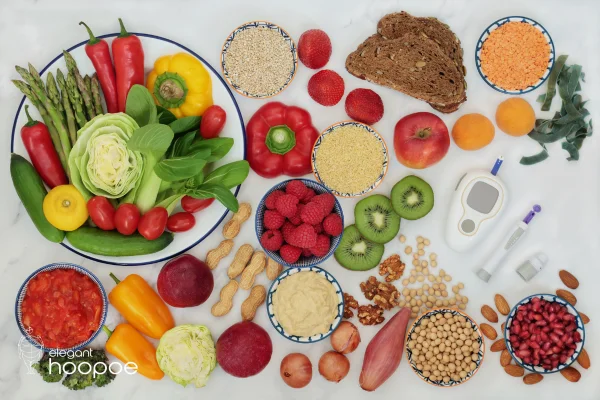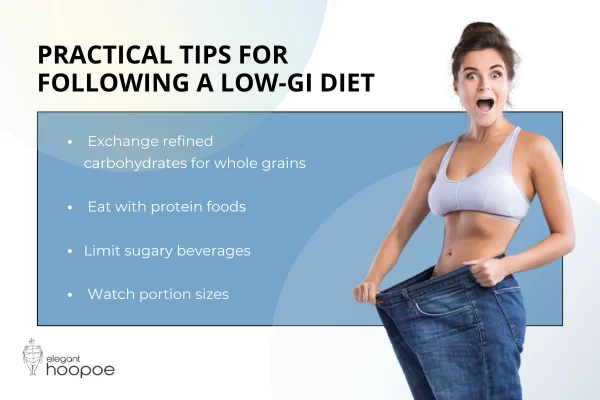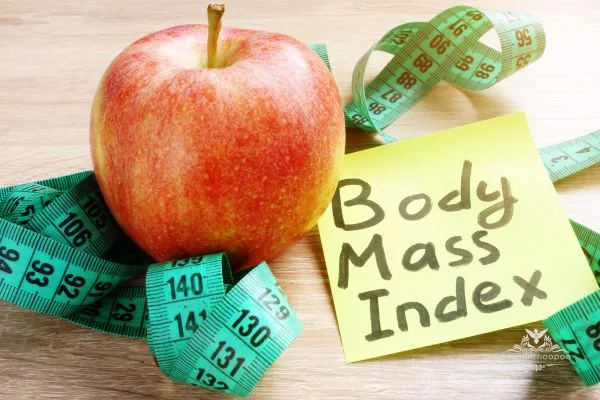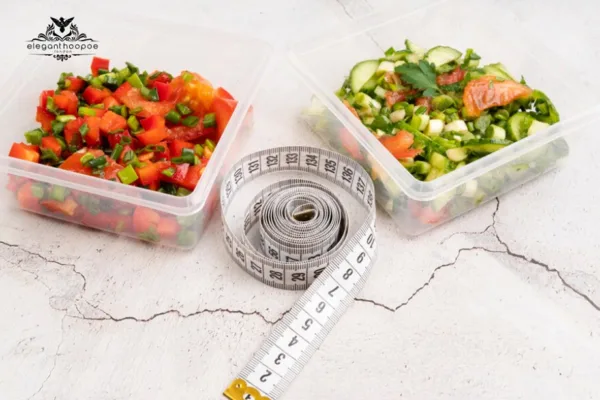Can a Low-GI Diet Help You Lose Weight Effectively?
A low GI diet for weight loss can be effective by regulating blood sugar, reducing cravings, and promoting fat burning. Key benefits include:
- Appetite control – prevents hunger spikes and overeating.
- Sustained energy – avoids energy crashes linked to high-GI foods.
- Better fat metabolism – stable blood sugar reduces fat storage.
- Long-term health – may lower the risk of diabetes and heart disease.
For best results, pair a low-GI diet with portion control, protein-rich meals, and regular exercise to support sustainable weight loss.
With the umpteen diets confronting the individual today in the pursuit of weight loss, options can easily overwhelm them. One of the most popular new approaches consists of a low GI diet-a particular way of eating that focuses on foods whose sugars are slowly released into the blood. But what comes under the category of being a low-GI diet, and can it help you drop pounds? Let’s delve into just what this kind of diet is composed of and find out if this low-GI diet is indeed the right direction to take for effective weight loss.
What Is a Low-GI Diet?

The GI rates foods containing carbohydrates from 0 to 100, based on how they raise blood sugar after a meal. Foods with a low GI value, such as less than 55, release glucose slowly and thus cause a slower and smaller rise in blood glucose levels. On the other hand, foods with a high GI ranking, greater than 70, raise blood glucose more rapidly, leading to an energy spike followed by a crash in blood sugar levels, which can leave a person feeling hungry again shortly after consuming the food.
Related Article: Flexitarian diet meal plan
How Does the GI Scale Work?
- Low GI: 55 or less (slow release of glucose)
- Medium GI: 56-69 (moderate release)
- High GI: 70 or higher (fast release of glucose)
Foods low on the GI scale contain more fiber, since fiber is a physical barrier to digestion. Such foods include whole grains, fruits and legumes. High-GI foods are refined sugars white bread, and most processed carbohydrates.
Benefits of a Low-GI Diet for Weight Loss
The big plus of the low-GI diet is that it can flatten out spikes in blood sugar. This has several advantages when trying to lose weight:
- Appetite Control: Foods with low GI create a gradual, steady rise in blood sugar levels and a correspondingly slow release of insulin, thus minimizing feelings of hunger and overeating.
- Fat Burning: The spiking of blood sugar regularly will mean that your body has to release insulin, which is a hormone helping lower levels of glucose within the blood. This process reduces the burning of fat. With regulated blood sugar levels, it means the body can use body fat more.
- Sustained Energy: Foods with a high GI create spikes in energy, then energy crashes afterward, which makes you feel tired and more likely to reach out for those health-revitalizing snacks. Low-GI foods provide more regular energy supplies and continue to feed into your system throughout the day.
- Lower Risk of Chronic Diseases: Low-GI diets, besides weight loss, are said to help in lessening the risk of diabetes, heart diseases, and even some cancers due to improved insulin sensitivity and cholesterol levels.

What Foods Should You Eat on a Low-GI Diet?
Here are some examples of foods that are typically low on the GI scale:
- Non-starchy vegetables: leafy greens, broccoli, cauliflower, peppers, and mushrooms
- Fruits: apples, berries, peaches, and citrus fruits like grapefruits and oranges
- Whole grains: oats, quinoa, barley, and wild rice
- Legumes: lentils, chickpeas, kidney beans, and black beans
- Nuts and seeds: almonds, walnuts, chia seeds, and flaxseeds
- Healthy fats: extra-virgin olive oil, avocado, and coconut oil
Related Article: Pescetarian meal plan to lose weight
What Foods to Avoid?
Some high-GI foods that should be minimized or avoided include:
- Refined grains: white bread, instant rice, and most processed breakfast cereals
- Sugary snacks: pastries, candy, and sodas
- Processed foods: chips, crackers, and other snacks made with white flour or sugar
Related Article: 7 fruits to reduce when trying to lose weight

Does a Low-GI Diet Guarantee Weight Loss?
On the contrary, the low-GI diet works very well because it promotes better blood sugar regulation and suppresses appetite; however, one does have to keep in mind that after all, it is a factor of calorie balance; that is to say, calorie expenditure over intake. A diet composed of low-GI foods may make you full for longer and thus reduce cravings, but if you gorge on too much or take in high-fat, calorie-dense foods-even though these might be low-GI-you might as well not be able to lose much weight.
Furthermore, the GI does not consider portion size. Even a food that does have a low GI can be very high in overall calories. Because of that, the key is to combine a low-GI diet with portion control and a balanced intake of protein, fiber, and healthy fats.
Practical Tips for Following a Low-GI Diet

- Exchange refined carbohydrates for whole grains: Use brown rice instead of white rice, quinoa, or whole oats instead of white pasta.
- Eat with protein foods: Add protein-rich foods to your low GI food, such as whole grains and vegetables, because it will give them a chance to digest slowly and make you feel full of fish, chicken, or beans.
- Limit sugary beverages: Drinks such as pop, fruit juice, and sweetened coffee can be very high in their GI, adding mostly calories to your diet with little value.
- Watch portion sizes: Even low-GI foods can cause weight gain if consumed in excess, so watch your portion sizes.
Related Article: Can you lose 20kg in a month?
Conclusion: Can a Low-GI Diet Help You Lose Weight?
Where the low-GI diet supports weight loss-as it should, based on its controlling hunger, providing sustained energy, and improving insulin sensitivity-it does best in conjunction with other behaviors of healthy living, like regular exercise, portion control, and mindful eating. Like any approach in diet, the keys are consistency and balance. For those searching for a sustainable way to lose weight with supportive actions toward long-term health, the low-GI diet is an option to consider.






